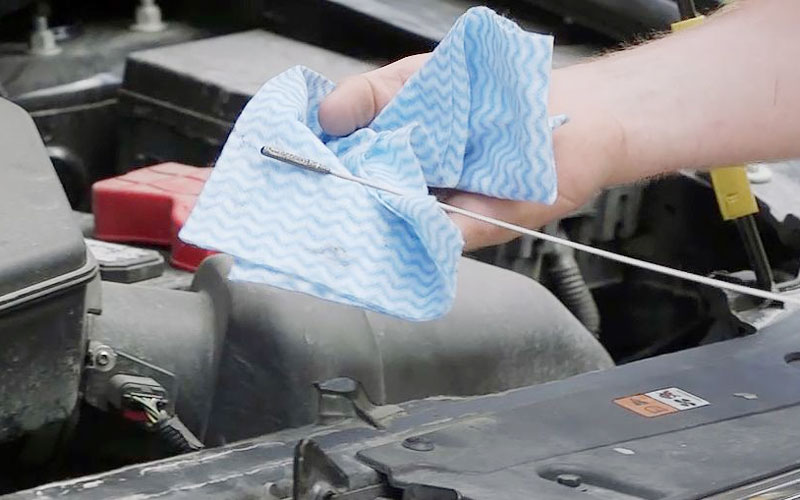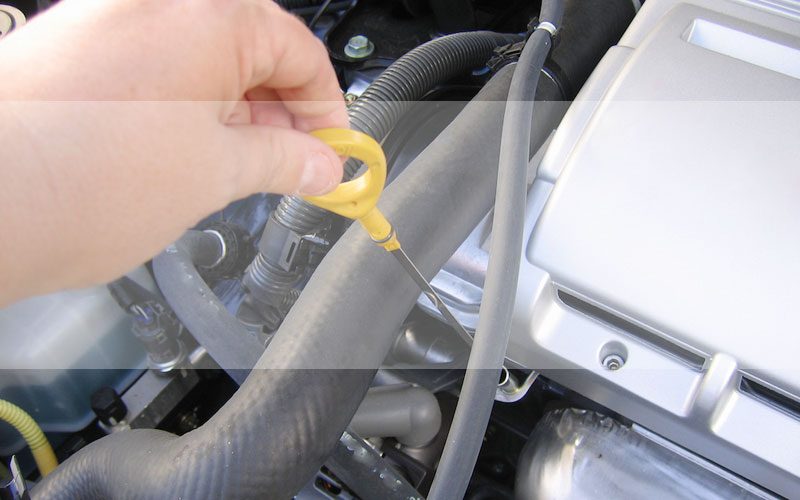As a car owner, it is important to maintain the road-worthiness of your vehicle and stay on top of its routine maintenance requirements. Checking transmission should also form a part of this regular checking process to make sure it is running smoothly.
Keeping the transmission fluid at optimum levels helps in ensuring that transmission is proper and the car is running smoothly. Transmission essentially refers to the gears that you shift into different modes like drive, park, and reverse.
Repairing or replacing it can be a highly expensive affair, therefore, it is recommended to keep tabs on the transmission’s health. Checking transmission fluid is an easy and quick task and can be performed without much expense.

Checking-transmission-fluid
The Very Important Car Manual
There are a few important things that should be considered before venturing into your car’s bonnet. The first and foremost step is to check the car’s manual to find out if the vehicle has an automatic or manual transmission.
Manual transmissions don’t require any fluid top-ups as they are factory filled. The fluid gets changed whenever the vehicle goes for repair. In your automatic transmission vehicle, the fluid is stored in a transmission oil pan and needs to be checked periodically. The recommended range for this is between 30,000 and 60,000 miles. This, however, can vary depending on the make of the vehicle and the owner’s manual can tell you the exact range.
The owner’s manual can also provide information on the type of transmission required as dual-clutch automatics, conventional automatic transmissions, and continuously variable automatic transmissions use the type that is specific to their make.
Checking The Transmission Fluid
Cars don’t lose transmission fluid in the normal course of things. Therefore, if the level is down, it can indicate the possibility of a leak. In such a situation, it is recommended to consult a professional who can inspect and provide information and a further course of action to avoid damage to the transmission.

Checking the fluid
Checking the fluid is a fairly simple and easy process and does not require the services of a car mechanic. Follow the below-mentioned steps if you are doing this for the first time,
- Keep your car in “Parking” mode on a level surface, switch it on allowing the engine to idle.
- The next step is to take the dipstick out. It is usually in the engine compartment under the hood. The owner’s manual can help you locate this as it can be in different places for different models and makes. Also, keep in mind that you don’t pull out the engine oil dipstick. Here again, it is important to consult the manual. There is a possibility that you may not find a dipstick altogether as some modern cars use transmissions that don’t require fluid checks or replacement.
- However, if your vehicle does require a check then the next step is to pull out the stick and clean it making certain that it will be readable. Make sure to clean it with a clean, lint-free tissue or piece of cloth.
- Replace the clean dipstick and slowly pull it out again.
- The next part of the process involves the reading of the fluid. The first step is to keep the stick against a white background so that the colors are easily visible. Next step is the analysis of the dipstick,
- A reddish-pink color is an indicator of healthy fluid level
- A brownish-red fluid means that the transmission fluid is low and requires replacement
- A black or dark-brown fluid would require professional help as your car may require more than just fluid replacement.
- Metal shavings in the fluid or dark, burnt smelling fluid is bad news as well. These can indicate a possibility of damage to the vehicle’s transmission components.
As mentioned earlier, ‘low’ fluid reading can also be indicative of a leak in the transmission components. To confirm this situation, you can refill the fluid and then check it at regular intervals for a few days to see how fast the fluid level reduces. The speed at which the level is reducing can provide a good indication of the severity of the leak.
You can also look under the body of the car to ascertain any fluids dripping down. If you park your car in the same spot daily then you can check for markings on the ground. A blackish fluid usually indicates engine oil and water condensed from the air conditioner can also leave marks. However, reddish fluid spots, more often than not, mean a leaking transmission fluid.
In case of a rapid decrease or leakage of your car’s transmission fluid call a reputable car service professional or a mechanic without any delay. It is recommended to visit a service center that specializes in the make and model of your car as their experts will have the most experience concerning your vehicle.
Filling Up
If the fluid level is low and there is no damage to the transmission components then you can go ahead and top-up the fluid. This process can be carried out with the help of the tube that contains the dipstick. Before adding the fluid make sure the correct type that suits the vehicle’s make. This, again, can be determined by consulting the owner’s manual.
Fluid can be added with a long spouted narrow funnel. Wait for some time as the fluid goes down and then start the car engine. At this time, check the level of the fluid to make sure that it is at the recommended level.

Checking the transmission fluid
Transmission fluid’s purpose is to the hydraulic pressure required to operate the transmission. It also keeps the transmission cool and lubricated and a low fluid level may force the pump to draw air into the system. This can interrupt the optimum flow of the automatic transmission fluid.
Therefore, a healthy transmission can mean a longer life for the car. The above-mentioned instructions are meant as general guidelines. Make sure that you consult the car’s manuals for more specific instructions regarding checking the transmission fluid levels.


That’s good to know that a healthy transmission could make your car last longer. I feel like that would be nice to get as much out of your car as possible. I’ll have to look at my transmission fluid so that I know when I need to have more added to it.